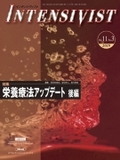Japanese
English
- 有料閲覧
- Abstract 文献概要
- 参考文献 Reference
熱傷を含む重症患者の栄養療法では目標エネルギー投与量の計算に間接熱量計を用いることを推奨しているが,一般には普及しておらず,推算式や簡易式を用いている施設が多い。推算式のうち古典的なCurreriの式や有名なHarris-Benedictの式は,いずれも過剰評価になりやすいことが指摘されている。他にTorontoの式やXieらの式があるが,Torontoの式は間接熱量測定との近似が高くESPENの勧告でも推奨されている。急性期におけるエネルギー制限が重視されつつある近年では過剰投与は避けるべきであり,もはやCurreriの式は用いるべきでないと考える。可能であれば間接熱量計を使用し,経時的に目標エネルギー投与量を計算することが望ましく,間接熱量計のさらなる普及が求められる。また,推算式を用いる場合も,Curreriの式以外の式で計算し,やはり過剰投与にならぬよう注意することが重要である。
The use of indirect calorimetry to calculate the target caloric intake for patients suffering from severe illness or injury, including burns is recommended, but many institutions use predictive or simplified formulas since they are not widely employed. It has been shown that among predictive formulas, the classical Curreri and the famous Harris-Benedict formulae are both likely to overestimate caloric requirements. Other than the Toronto formula and that of Xie et al., it is difficult to recommend a specific formula to use. Since energy restriction in the acute phase of illness has been emphasized in recent years, overfeeding should be avoided, and we believe the Curreri formula should no longer be used. It is desirable to use an indirect calorimeter proactively and to calculate the target caloric intake based on the results, so that the estimate is not too high. This method is expected to be more popular. Even when using a predictive formula, it is important to avoid the Curreri formula and to assure that the patient is not overfed.
Copyright © 2019, MEDICAL SCIENCES INTERNATIONAL, LTD. All rights reserved.


